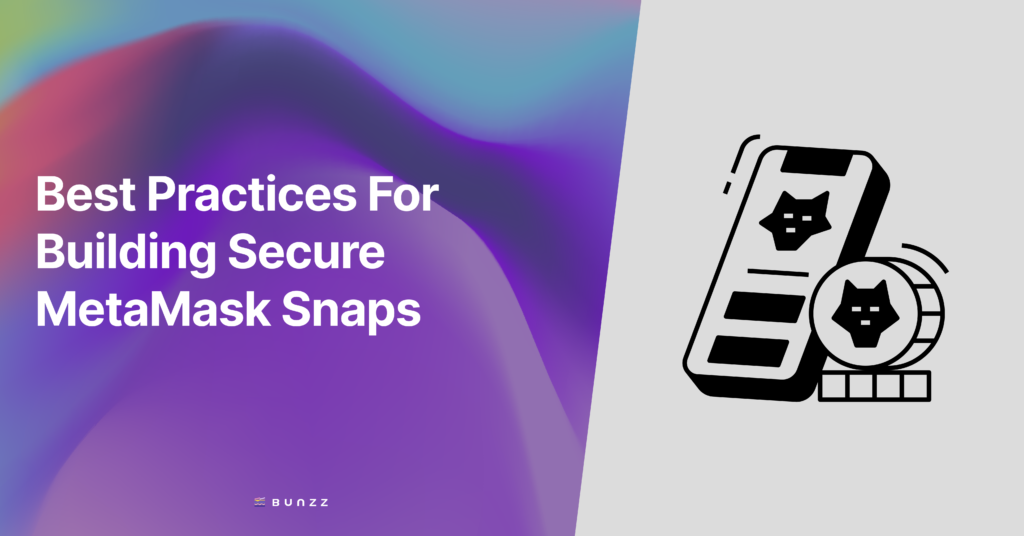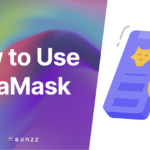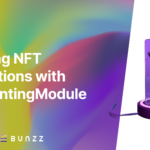MetaMask, the leading crypto wallet, introduced an exciting feature called “Snaps”. These Snaps are like add-ons or extensions of your wallet, but there’s a catch—they’re created using JavaScript and like every other software development project, they must be secured before using them.
In this guide, we’ll explore the best practices for building secure MetaMask Snaps, ensuring users of this trending wallet a safer and more reliable snap experience.
What Are Meta Mask Snaps?

MetaMask Snaps are features or extensions that enhance the wallet’s functionality and capabilities. Think of them as mini-apps that you can use to improve your operations when using the Metamask wallet. These programs allow you to interact with the ever-evolving Web3 landscape in more ways than ever before. Here are their three key features:
- Interoperability: Snaps shines by enabling your MetaMask wallet to connect and interact with blockchains other than Ethereum, significantly expanding its usefulness.
- Transaction Insights: Have you ever felt unsure about a transaction before approving it? Snaps can provide additional information and analysis about the transaction, helping you understand what you’re signing off on.
- Notifications: With Snaps, no more essential notifications are missing as you get them on your MetaMask interface. This can be anything from crypto-related news to updates on your wallet activity.
How to Use MetaMask Snaps
MetaMask Snaps are like little superpowers for your crypto wallet. They allow you to explore new blockchains, gain deeper insights into your transactions, and stay informed within the familiar MetaMask interface. If you’re ready to unlock the full potential of your MetaMask wallet, here’s a step-by-step guide to using MetaMask Snaps:
1. Update Your MetaMask
Before diving into Snaps, ensure you have the latest version of MetaMask installed in your browser. Updating to the latest version guarantees compatibility and access to the newest features. Updating MetaMask is usually a simple process within the browser extension itself.
2. Explore the MetaMask Snaps Section
Head over to the MetaMask Snaps section within your wallet interface. Here, you’ll find a variety of Snaps with different functionalities. This allows users to efficiently cater to their needs, whether enhancing security, exploring DeFi (Decentralized Finance), or diving deeper into the world of NFTs (Non-Fungible Tokens).
3. Add a Snap to Your Wallet
Browse through the available Snaps and select the ones that attract you. Each Snap will have a description outlining its purposes. Once you’ve identified a Snap you want to use, follow the on-screen prompts to add it to your MetaMask wallet. Moreover, the process involves reviewing the requested permissions, such as granting access to a mobile app and confirming the installation.
4. Manage and Tailor Your Snaps
Once you’ve installed your chosen Snaps, it’s time to personalize your experience. Go to your MetaMask settings and navigate to the Snaps section. Here, you can manage all your installed Snaps. Therefore, you can customize your settings, adjust permissions, and temporarily disable Snaps you’re not using. Remember, it’s essential to understand the permissions each Snap requests before granting them access.
5. Explore Decentralized Services with Ease
Explore a vast array of decentralized services and protocols directly from your MetaMask wallet. Access DeFi platforms for lending, borrowing, and earning interest on your crypto holdings. Dive into NFT marketplaces to discover and trade unique digital collectibles. Additionally, participate in blockchain games with enhanced security and transparency, all within the comfort of your wallet.
Core Security Practices for Your Metamask Snaps
MetaMask is a gateway to the decentralized web and provides a platform for developers to create Snaps, an excellent way to extend its functionality. However, given the sensitive nature of handling, developers must follow stringent security practices to protect users’ assets and privacy. Here are some best practices for building secure MetaMask Snaps:
1. Code Review and Audits
Conduct thorough code reviews and, if possible, security audits by third-party experts. Doing this will help you identify and fix vulnerabilities early in the development cycle. Tools like static code analyzers, linters, and security scanners can also aid in detecting potential issues.
2. Minimal Permissions
Follow the principle of least privilege by requesting only the necessary permissions from users. Avoid asking for excessive access to sensitive data or device functionalities unless required for Snap’s functionality.
3. Secure Communication
Ensure all communications between Snap, MetaMask, and external services are encrypted using solid protocols like HTTPS. Use secure APIs and libraries for data transmission and avoid transmitting sensitive information in plain text.
Additionally, it carefully handles user data and private keys. Do not store sensitive information like passwords or private keys in local storage or client-side databases. Instead, use MetaMask’s secure storage APIs or encrypted local storage options.
4. Authentication and Authorization
Implement robust authentication and authorization mechanisms to verify user identity and permissions. Utilize standards like OAuth or OpenID Connect for user authentication and JWT (JSON Web Tokens) for session management. Furthermore, validate and sanitize all user inputs to prevent common vulnerabilities like injection attacks (e.g., SQL injection, XSS). Input validation libraries and sanitize user-supplied data before processing or storing it.
5. Error Handling
Implement proper error handling and logging mechanisms to capture and report errors gracefully. Furthermore, avoid exposing sensitive information in error messages that could aid attackers in exploiting vulnerabilities. Moreover, try implementing content security policy (CSP) headers and frameworks that automatically escape output with constant user input validation to protect against XSS attacks.
6. Regular Updates
Stay vigilant about security updates and patches for dependencies, libraries, and the MetaMask platform. Regularly update your Snap to incorporate the latest security fixes and enhancements.
7. Compliance and Legal Considerations
Adhere to relevant regulatory requirements, such as data protection laws (e.g., GDPR, CCPA), financial regulations, and industry standards (e.g., OWASP Top 10). Obtain necessary permissions and approvals for handling sensitive data or conducting financial transactions.
8. Community Engagement and Feedback
Engage with the MetaMask developer community, participate in forums, and seek feedback from users and security experts. Moreover, community-driven initiatives like bug bounty programs should be used to identify and address security issues.
Wrapping up
MetaMask Snaps represents a significant step in empowering users within the decentralized ecosystem. This wallet upgrade offers customization, interoperability, and enhanced user experience to provide a more seamless and immersive blockchain experience. Consequently, snaps stand out as a versatile tool for users to explore the vast opportunities of decentralized applications and services.







